Africa Kush and Axum
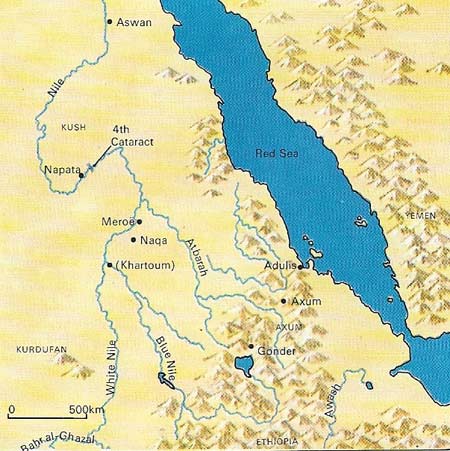
Figure 1. Civilizations of Kush/Meroe and Axum occupied the northeast corner of Africa: Kush/Meroe in the middle Nile valley south of Egypt and Axum on the high mountain escarpment of northern Ethiopia. Axum was the founding state of the Christian empire of Ethiopia.
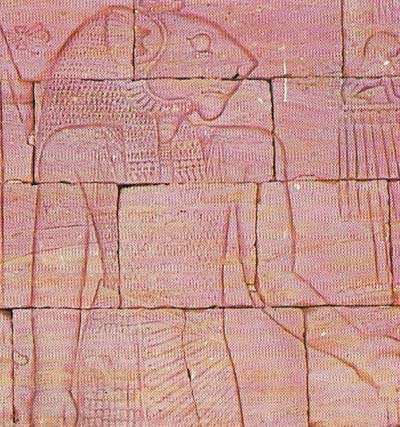
Figure 2. The Lion God of Kush was engraved on a temple wall of Naqa (100 BC–AD 100), a center south of Meröe. The carvings show an Indian influence.
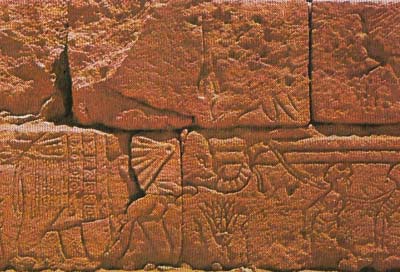
Figure 3. An elephant and war captives form a temple frieze near Meröe, 1st century AD. Elephants were used for military and ceremonial purposes at Kush/Meröe.
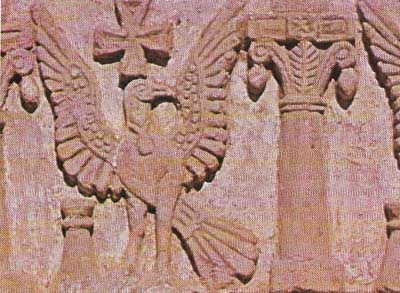
Figure 4. Christian art from vanished Christian kingdoms survived in a church at Faras, near Wadi Haifa, which has now been engulfed by the waters of the Aswan dam. Christian kingdoms succeeded Kush/ Meroe after the empire collapsed in the 5th century AD shortly before Egypt became part of the realm of Islam.
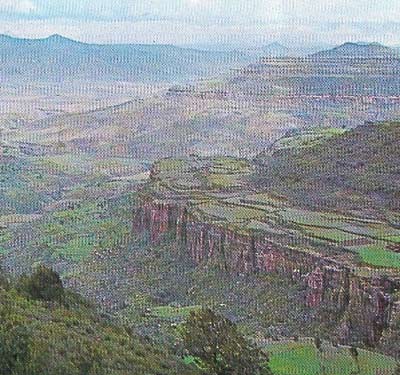
Figure 5. Rich in products that drew Greek, Arabian, and Indian merchants alike, Axum was a land of soaring crags, the highest (Rasdajan) at 4,620 meters (15,158 feet). One of the most difficult African lands to live in or invade, it was to enter European mythology as the home of the legendary Christian king, Prester John.
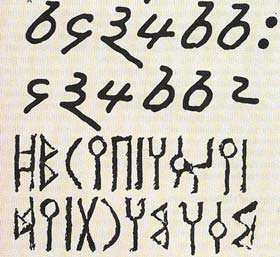
Figure 6. The mysterious Meroitic script (A) is still undeciphered. The Sabaean script (B) of Axum is the forerunner of modern Amharic, the language of Ethiopia.
During the course of ancient Egyptian history, the armies of the pharaohs pushed the frontier of their empire ever farther south, along the axis and heart of their civilization, the Nile, towards tropical black Africa. By the time of the New Kingdom (c. 1500 BC) all the riverine lands as far as the Fourth Cataract – that is, in the middle of the great bend of the Nile near Luxor– had been conquered and to some extent settled by Egyptians. This country, later called Nubia, was known to the Egyptians as Kush and in time a typical late Egyptian civilization flourished there.
The emergence of the Kushite kingdom
By about 1000 BC the New Kingdom had fallen and Kush emerged as an independent state – independent not only politically from Egypt, but increasingly also culturally. In 200 years its rulers had grown so independent and powerful that in 725 BC they were able to march down the Nile and conquer the whole of Egypt, where they formed Dynasty XXV of the Pharaohs.
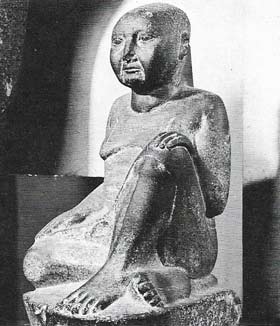 |
| Narwa was governor of Thebes during the reign of one of the Kushite line of pharaohs in the 8th and 7th centuries BC. The Kushites had moved north and ruled Egypt until they were defeated and driven back to their old lands by a new invader of the Assyrians. |
Kushite control of Egypt, however, was short-lived. Between 676 and 663 BC Assyrian armies invaded and devastated Egypt – first under Esarhaddon and later under Ashurbanipal. The Kushite pharaoh Taharqa retreated southwards to Kush. What had made the mighty Assyrian armies almost invincible over much of the Middle East was their possession of iron weapons, which were much superior to the bronze weapons of their foes. The leaders of Kush had learned a hard lesson and took with them the Assyrian knowledge of iron technology. This was to be the basis for the stability of Kush.
After the withdrawal from Egypt, the rulers of Kush expanded southwards, keeping to the valley of the Nile. The country on either side of the great river was more fertile than it became subsequently and could support large herds of cattle. By the 6th century BC the frontier of Kush had reached just to the south of present-day Khartoum, where the land was well wooded.
Dominance of the Meroë civilization
The power center of the empire swung to the south, from the old capital of Napata (near the Fourth Cataract, where the surrounding land had become over-grazed) to Meroë, south of the Atbarah's confluence with the Nile. From this time, the empire is often referred to as Meroë, rather than Kush. Whereas some of the inhabitants of the northern part of Kush were black people, now nearly all the people in the country around Meroë were black and the empire became a black state.
Meroë had abundant iron-ore and wood with which to smelt it. The iron industry of the empire was on a large scale. Immense slag heaps still litter the landscape. The well-armed horsemen of the Meroë army were able to defend the settled lands from attacks of desert nomads. A flourishing trade was maintained with Ptolemaic Egypt, Arabia and even India, via the Red Sea.
By the beginning of the Christian era, however, the civilization of Kush/Meroë had begun to decline. This was the result of internal impoverishment, especially the drying up of once rich grazing and agricultural lands. Attacks by nomads became more difficult to contain, and the empire finally collapsed when invaded by a powerful army from neighboring Axum in AD 350.
The empire of Kush/Meroë had been in existence for over 1,000 years and its cultural achievements were rich and vital (Figures 2 and 3). They represented far more than an Africanized form of Egyptian culture. The inhabitants of the empire took their Egyptian heritage, borrowed more from the Hellenistic world and India, and fashioned something unique, including their own form of writing, a cursive script that has to date defied all efforts to decipher it (Figure 6).
Axum, the rival empire in Ethiopia
Axum, the rival empire of Meroë, had its origin not on the African continent, but in Arabia. A number of small but prosperous states grew up in the Yemen early in the 1st millennium BC, one of which, Saba, was probably the Sheba of King Solomon's time. By about the 7th century BC Semitic-speaking people from the overpopulated Yemen spilt over the Red Sea to the Horn of Africa, settling as farmers on the northeastern edge of the high plateau of Ethiopia. There they prospered and were able to dominate the indigenous Kushistic-speaking peoples, many of whom gradually accepted the culture and the Semitic language of the newcomers. One group of these, called the Habashat, established a kingdom in the 3rd century BC, centered on Axum.
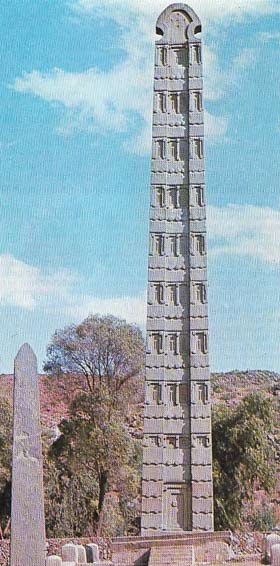 |
| The tallest surviving stele, or obelisk, at Axum, is one of the many splendid monuments erected by the rulers of the kingdom of Axum as their wealth grew from trade passing through Arabia and India. |
The Hellenistic Greeks were influential at the court of the kings of Axum and prepared the way for the reception of Christianity. The missionary responsible for the conversion of the kingdom in the 4th century AD was a Syrian called Frumentius (c. 300–c. 380). He was made bishop of Axum by the patriarch of Alexandria and within a few decades Christianity had been established there. The rulers of Christian Axum conquered parts of southern Arabia in the 6th century AD, before being driven out by Persian forces; from there on Axum went into gradual decline: the Muslim Arab conquest of Egypt disrupted her Red Sea trade and when the kingdom was devastated by nomads her power withered. Nevertheless, its political, religious and cultural traditions survived to be revived in the Middle Ages deep in the heartlands of Ethiopia.
